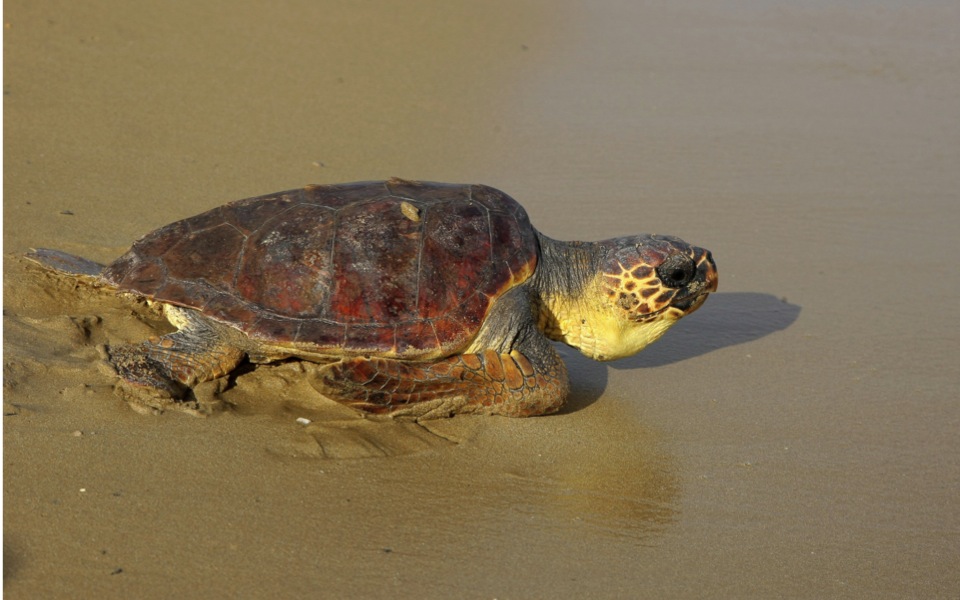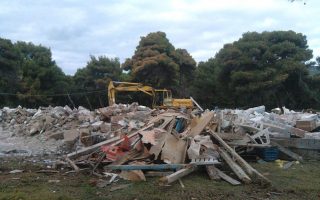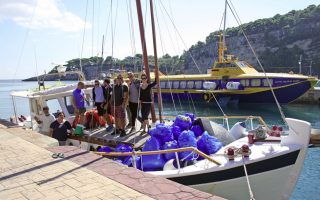Greece back in court over failure to protect sea turtles

Greece has been hauled before the European Court of Justice again for disregarding environmental protection regulations, this time over the absence of measures to protect the loggerhead sea turtles in the Bay of Kyparissia in the southwestern Peloponnese, in a case that dates back to 2012, when the country was given its first warning from the European Commission.
In its action against Greece, the Commission accuses the state of failing to fulfill its obligations concerning the conservation of natural habitats and wild fauna and flora, by not taking “the appropriate measures to avoid the deterioration of natural habitats and the habitats of species, and the disturbance of the species for which a site had been designated, and having permitted (without carrying out any appropriate assessment of the implications) activities which are likely to have a significant effect on the site at issue, either individually or in combination with other plans or projects, reducing and destroying the nesting area of the priority species Caretta caretta, which is present there, causing disturbance to the species concerned and, ultimately, reducing and destroying the sand dune habitats.”
The Commission notes that there have been signs of activity that affects the ecosystem in question, such as the flattening of dunes used as nesting sites by sea turtles in order to facilitate visitor access, expansion of agricultural cultivation onto the dune area, as well as road building and construction activity that impinges on the protected habitat.
Incursions on the turtles’ nesting sites started in 2011, with a local business that illegally opened a road network through the dunes in order to construct a complex of seaside summer residences – also illegal in the protected area. The Commission expressed its concerns about the development in 2012 and warned of judicial proceedings, with the Greek side at the time promising to take action and suspending all building licenses for the area in anticipation of a presidential decree that would clearly define its status.
The decree, which was drafted in 2014 and submitted to the Council of State for approval, fell far short of EU and conservationists’ demands, as it designated the sand dunes of Kyparissia Bay as a “regional” rather than “national” park, allowing much looser restrictions.
The country’s highest administrative court in 2015 returned the document to the Environment Ministry with numerous observations and objections that still need to be addressed. Environmental groups have also vehemently opposed the planned decree, arguing that it does not adopt a strong enough stance against activity that is detrimental to the natural habitat.
“The alternate minister for the environment stated in December in Brussels that Greece would implement European directives to the letter. So, perhaps Kyparissia Bay is a good opportunity for him to put his words into action,” says Ioli Christopoulou, nature policy officer at WWF Hellas. “A comprehensive presidential decree is needed defining the entire area as a national park as soon as possible. It should have happened sooner, but the ministry needs to get it out by at least June 28, when the suspension of building expires.”
The Commission is asking the ECJ to issue a fine against Greece for “failing to take the requisite measures to establish and implement an effective system of strict protection for the sea turtle Caretta caretta (a priority species) in Kyparissia Bay in a way which avoids any disturbance of the species concerned during its breeding period and any activity which can cause deterioration or destruction of its breeding sites.”
It is almost certain that Greece will be convicted, yet local authorities and businesses in Kyparissia continue to regard the possibility of a national park being established as a calamity.
“Kyparissia Bay is an area of particular natural beauty and ecological importance because it encompasses rare dune habitats and is considered the second most important nesting site for the Caretta caretta in the Mediterranean. The Greek state should have already established an effective institutional framework for its protection, as there is a lot of interest in aggressive development on prime real estate located not more than 100-200 meters from the coastline that threatens to destroy the bay for good,” says Vassilis Stamogiannis, head of the Mediterranean Association to Save the Sea Turtle (MEDASSET).
“Unfortunately, nine months after the Council of State issued its report, the Environment Ministry still hasn’t issued a revised presidential decree for Kyparissia Bay. In the meantime, political officials on the local, regional and national level continue to ignore the warnings of the EU, the recommendations of the Council of Europe, the opinion of the Council of State and the national interest, making a statement about the ostensible development of the area through aggressive construction that would inevitably lead to degradation.”





